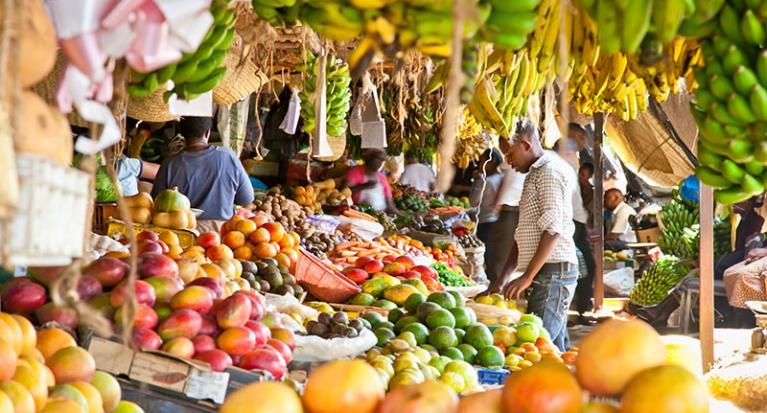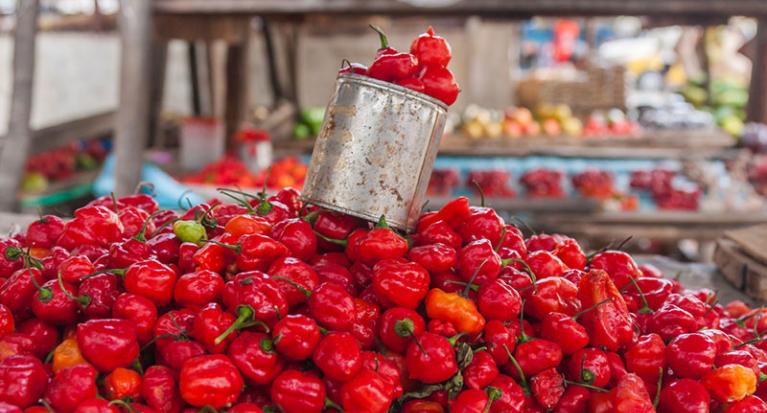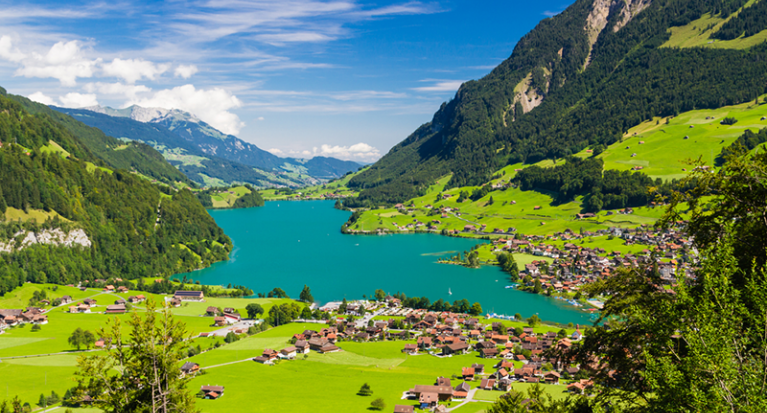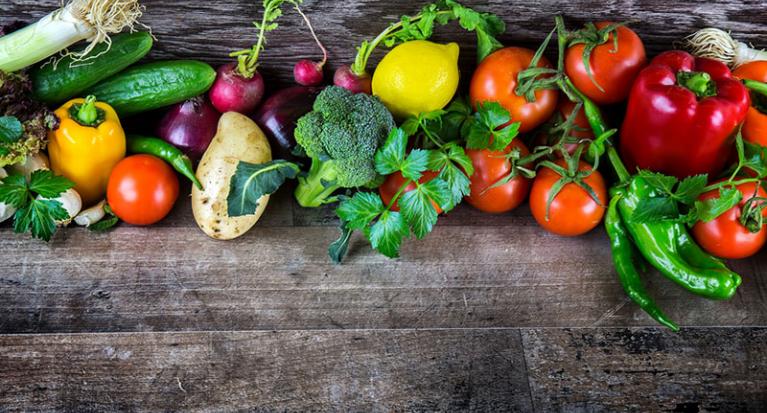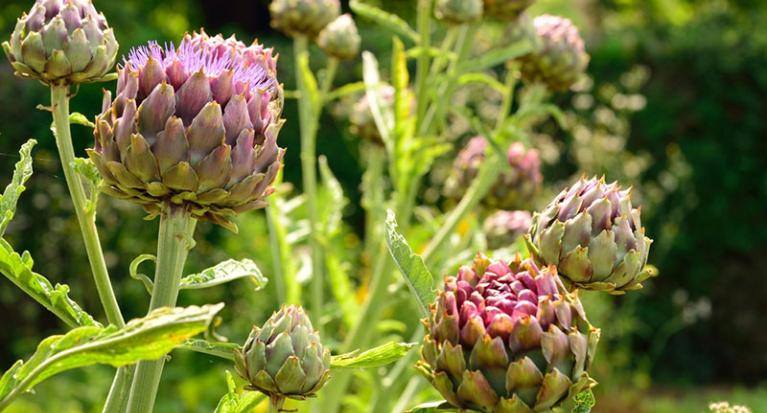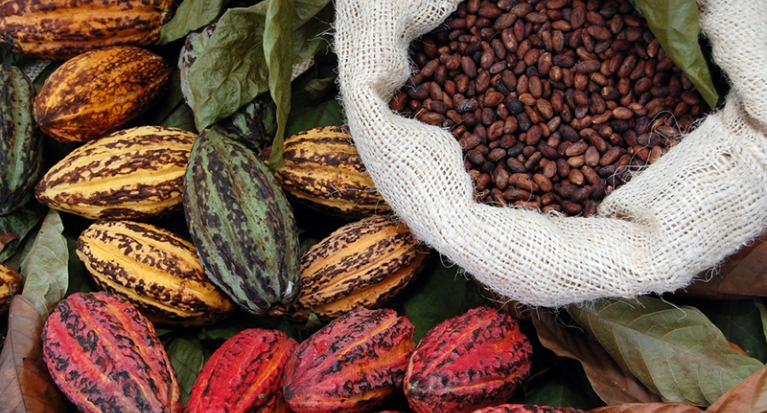Wonderful Christmas traditions
Festivities around the world
©iStock/Pamela Moore" data-slide="http://www.ealimentarium.ch/sites/default/files/emag4a_noel_000004821146_0.png"/>
A festival of sharing par excellence, Christmas takes different forms depending on the country you are in.
©iStock/Pamela Moore
In the French-speaking part of Switzerland, if you sit down with your family on the evening of 24 December to a dinner of turkey stuffed with chestnuts and conclude your meal with a gourmet Yule log cake, you may think you know all there is to know about Christmas traditions and have paid due tribute them. Yet the food on the Christmas table varies widely depending on whether you are in Latin America, the Antilles, northern or southern Europe, Asia or Australia. Aside from the culinary delights we enjoy around the Christmas tree, there are many other Christmas customs, some of which may prove surprising. The festivities are of course related to Christianity, which has spread more or less all over the world, however, they are also linked to pagan customs. Even before the Christian era, the Romans dedicated a festival to Saturn in the depths of winter. Why not take a short tour of Christmas customs and traditions alive today?
Northern Europe
- In Greenland, on Christmas Eve people tuck into narwhal fat. The narwhal is an Arctic cetacean and this delicacy is enjoyed with sea salt and rye bread. The men serve the food.
- In Iceland, rock ptarmigan grouse graces the table on Christmas Eve, while smoked lamb is the preferred dish on 25 December. Legend has it that thirteen days before Christmas, thirteen goblins come down from the mountains to the towns to slip presents into children's shoes.
- In Sweden, pickled fish is an essential feature, as is rice pudding in which an almond has been hidden. If the almond is sweet, the person who finds it will soon be married. On the other hand, if the almond is bitter, the person will remain single. The Swedes also feast on ham that has been lightly pickled in brine before being boiled and roasted, and on a gratin of potatoes with anchovies, a dish known as ‘Jansson's temptation’.
Western Europe
- In the UK, Christmas wouldn't be Christmas without a Christmas pudding, which is prepared several weeks in advance. Every family member has to stir the mix, in which a coin is concealed to bring good luck.
- In Ireland, an ancient tradition calls for bread and milk to be left outside the door, which remains unlocked on Christmas Eve so that Mary and Joseph or any traveller wishing to take a rest may find shelter. Every family makes biscuits with caraway seeds and three different Christmas puddings which are eaten on Christmas Day, New Year's Day and on Twelfth Night.
- In Germany, preparations for the festive season start on 6 December. The agenda for the days before Christmas includes making spiced gingerbread and biscuits and buying large quantities of decorations. Many families decorate their houses with several Christmas trees. "Stollen is the traditional cake. Originating from Dresden, it is a kind of long loaf containing preserved fruit, raisins,spices, rum and marzipan and covered with icing sugar. The shape of this cake dates back to Mediaeval times and represents the Christ child in his swaddling clothes"1.
Southern Europe
- In Italy, the big star of Christmas appears after 25 December. This is Befana, an old woman who flies over the houses with a broom in her hand. She roams the countryside until Epiphany distributing presents to children. The Christmas food par excellence is the famous Panettone. This may be stuffed with cream, coated with a variety of sauces or even covered with chocolate. Pandoro, originating from Verona, is another cake that has enjoyed great popularity over the last century1.
- In Spain, the nochebuena (meaning good night) of the evening of 24 December is a festive family dinner. While culinary traditions vary from one province to another, the menu almost invariably includes roast lamb, turkey and seafood1. The season would not be complete without turron, a kind of nougat. On Twelfth Night, children are visited by three Father Christmases. These are the Three Kings, who bring gifts and, in doing so, receive wine, biscuits and apples for their horses.
- In Cyprus, no meat is eaten during the forty days prior to Christmas, in order to purify the spirit for the coming of Christ. On 24 December, a pig is slaughtered in the village square. It will be on the evening menu following a traditional soup with egg and rice quenelles. Some families also serve poultry. The traditional pastries for the Christmas season are kourambiedes, shortbread biscuits sprinkled with icing sugar, melomakarona, spiced rolls soaked in honey syrup, and koulouria, a traditional bread with sesame seeds.
- In Portugal, families dine together before attending the mass of the rooster that is said to have crowed at the birth of Jesus. In every household, an entire table is devoted to desserts - thirteen in all, to recall the number of people present at the Last Supper. The Portuguese leave the leftovers on the table so that the angels and the dead can help themselves while they are at church.
Eastern Europe
- In Russia, Orthodox Christmas is celebrated on 7 January. People fast until the first star appears. The fast is broken with a porridge of cereals, honey and poppy seeds as symbols of hope, good fortune and peace. The starter on the Christmas menu is koulibiac, a pastry stuffed with meat or salmon. Beef stroganoff is the main dish. ‘Napoleon cake’, a millefeuille made with cream and jam, often meets with universal approval.
- In Poland, Christmas Eve is the most important time. Before the meal, families place a large platter with salt, a bible and money on the table in thanks to God for their daily bread and the money they have earned. "Unleavened bread is prepared and shared among the guests as a sign of conciliation on Christmas Eve. As a rule, the Christmas Eve meal does not include meat"1. The traditional Christmas dish is barszcz, Polish borscht (soup), of which there are as many variations as there are homes in Poland. It may be served with pierogis (mushroom ravioli) and pickled mushrooms2.
- In the Czech Republic, families purchase a live carp and keep it in the bathtub for a few days before preparing it for the Christmas meal, served with a black sauce made with cheese, gingerbread, grapes and almonds. The carp may also be breaded or fried and accompanied with potato salad and fresh salad1.
Africa
- In Egypt, the Copts celebrate Christmas on 7 January, as do Christians in Ethiopia. The celebrations are held at the end of a fast during which no meat or dairy products are consumed. Fata, their traditional dish, is made from bread, rice and boiled meat, generally lamb.
- In Nigeria, all the celebrations start with fireworks on 24 December. On the 25th, the whole family goes to church then comes home to enjoy a highly seasoned dish of chicken and rice. Some people also eat moin-moin. This is a mixture of black beans, vegetables, minced chicken liver, pieces of chicken, fish or prawns and eggs.
- In Ethiopia, Christmas is celebrated on 7 January. Christians circle the church three times with a lighted candle in their hands. The mass goes on for several hours. The Christmas menu consists of pancakes stuffed with highly spiced chicken and vegetables.
Asia
- In Singapore, Orchard Road - the main shopping street - glistens with a thousand lights for several weeks on end. Santa Clauses take children on their knees beneath an avalanche of artificial snowflakes while their parents fill their trolleys with all the world has to offer, listening to ‘Jingle Bells’ played full blast.
- In India, churches, mango trees and banana plants are decorated with red flowers.. Homes are decked out with paper garlands. People wear their best clothes to attend midnight mass and afterwards eat pork with spiced rice.
- In Vietnam, Christmas coincides with the start of the lunar year. Prosperous families enjoy a Western meal, with turkey and pudding on the menu, while the less well-off settle for chicken soup.
- In the Philippines, Christmas is a celebration of particular importance. It is the only country in Asia where most of the population is Christian. Young people go from town to town acting out scenes from the life of Jesus. All sorts of dishes can be found on the festive Christmas table, including paella, glazed pork, sweet and sour ham, beef tongue with tomatoes, Edam cheese and a wealth of fresh fruit.
Australia and Oceania
- In Australia, Santa Claus arrives on the beach on water skis. The festival is celebrated on the beach, right in the middle of summer. This country swapped turkey for a good barbecue many years ago.
- On the Fiji Islands, people go to church on the morning of 25 December before enjoying whole suckling pigs cooked in mud ovens.
In the United States they drink egg nog, made from eggs beaten with sugar and cream or milk with added spices and rum.
©Shutterstock/Mark Hayes
North America
- In Alaska, the Christmas meal often consists of fish, smoked salmon, doughnuts and biscuits.
- In the United States, turkey is on every table for the famous Thanksgiving celebration at the end of November. Many Americans eat beef at Christmas and, above all, drink egg nog, eggs beaten with sugar and milk or cream with the addition of spices and rum.
Latin America
- In Peru, a country which has welcomed many waves of immigrants, the turkey is ‘watered’ with pisco, a grape-based spirit, before being slaughtered. It is served with various sauces which vary depending on the community and which may be Japanese-style or spicy, or evoke the flavours of Chinese cuisine.
- In Mexico, where turkey originated, Christmas traditions bear the stamp of Spanish colonisation. Christmas nativity scenes often occupy a whole room and are set up so that passers-by can see them from the street. The Christmas meal consists of sweetcorn soup, turkey, dried cod or dishes of spiced beef with a chocolate sauce (mole).
- In the Antilles, Christmas decorations are hung on banana plants and coconut palms. Whereas in previous times everyone gathered together to slaughter the pig, they now enjoy a festive meal in which that animal plays a major role. Antillean black pudding and ham with pineapple are enjoyed with a gratin of christophines, all washed down with the famous agricultural rum-based Ti'punch.
Sources
KRUSE Hanne, 2003. Christmas Cooking Around the World. Oxford: New Internationalist Publications Ltd.
Links [visited on 15.12.2015]
1. Europe www.touteleurope.eu
2. Poland www.anoushkaencuisine.blogspot.ch
Greenland www.projet-arctique.over-blog.com
Portugal www.blog.villanovo.fr
Cyprus www.visitcyprus.com
DOSSIER Delicious discoveries |
The turkey, a Mexican bird
Although turkey takes pride of place on the Christmas menu in...

